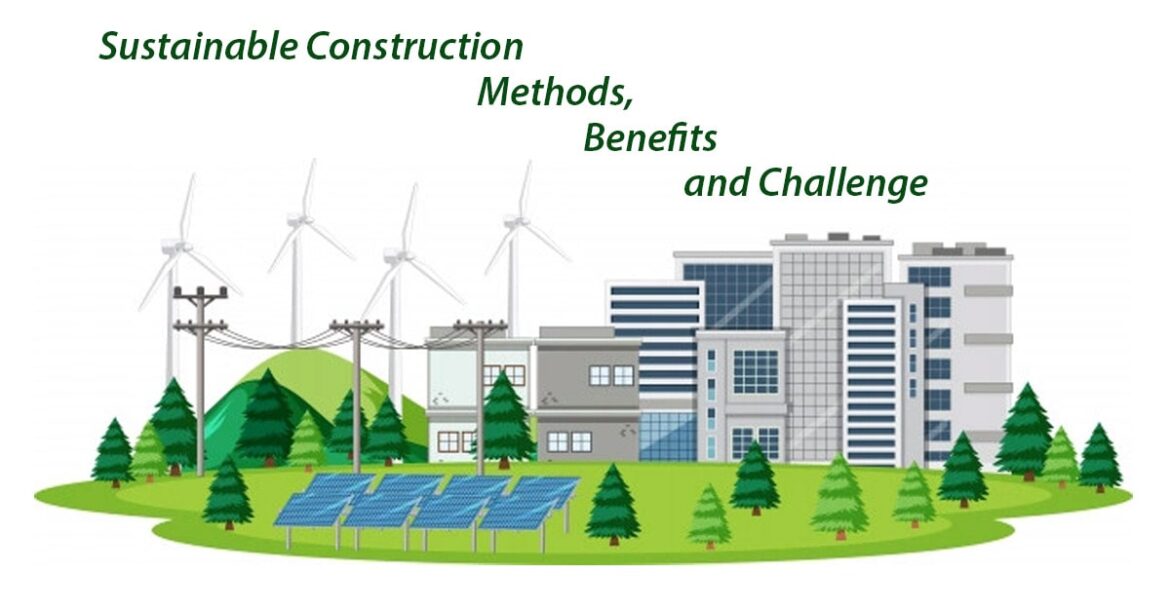The general contracting landscape in real estate is rapidly evolving, driven by technological advancements, a growing focus on sustainability, and changing market demands. In 2024, contractors are navigating a complex environment where efficiency, eco-friendliness, and innovation are at the forefront of every project. Here’s a closer look at the latest news and updates shaping the general contracting sector this year.
1. Sustainability is Shaping Every Project
Sustainability is no longer just an optional feature in construction; it’s a necessity. Green building certifications, such as LEED (Leadership in Energy and Environmental Design), are increasingly important, especially for commercial real estate projects. Clients are demanding eco-friendly practices, from the materials used to the energy efficiency of the finished structure.
Contractors are now focusing on renewable energy sources, reducing waste on construction sites, and integrating sustainable technologies like solar panels and energy-efficient HVAC systems. Additionally, there’s growing interest in low-impact building materials such as reclaimed wood, recycled steel, and sustainable insulation products.
This shift towards sustainability is not only driven by environmental concerns but also by the financial benefits of energy savings and government incentives for green buildings.
2. Technological Innovation and Construction Automation
Technology is revolutionizing the way general contractors operate, with 2024 seeing increased adoption of advanced construction tech. Drones are now routinely used for site surveys and inspections, providing contractors with real-time data on progress, identifying potential hazards, and ensuring the safety of workers. Similarly, 3D printing is being explored for the rapid construction of structural components, offering cost and time savings.
Building Information Modeling (BIM) is another key technology gaining traction. BIM allows contractors, architects, and engineers to collaborate on digital 3D models of buildings, enabling more precise planning, detecting potential issues early, and improving project efficiency. This technology is especially valuable in large-scale real estate developments, where even minor errors in planning can lead to costly delays.
Robotics and automation are also making their mark. Autonomous machinery, from excavators to brick-laying robots, is helping to reduce labor costs and increase the speed of construction, while ensuring greater accuracy and safety on job sites.
3. Modular and Prefabricated Construction on the Rise
Modular and prefabricated construction methods are experiencing significant growth in 2024, as developers look for ways to build faster and more cost-effectively. These construction techniques involve building sections of a property off-site in a factory setting before assembling them on location. This approach dramatically reduces the time required to complete a project while maintaining high standards of quality.
For general contractors, modular construction offers numerous advantages, including less site disruption, reduced material waste, and the ability to complete projects on tighter schedules. This method is increasingly popular for residential buildings, hotels, and even commercial spaces. With labor shortages and high material costs continuing to challenge the industry, modular construction provides a viable solution for meeting demand while keeping costs in check.
4. Labor Shortages and Workforce Development
One of the ongoing challenges for the general contracting sector is a persistent shortage of skilled labor. As the demand for new construction grows, the lack of qualified workers in key trades—such as electricians, plumbers, and carpenters—has become a significant issue in 2024. Contractors are being forced to innovate in how they recruit, train, and retain workers to keep projects on schedule.
To address this, many contractors are turning to vocational training programs and apprenticeships to cultivate the next generation of skilled workers. The use of technology, like virtual and augmented reality, is also becoming popular in training, allowing workers to gain hands-on experience in a simulated environment before they step onto a job site.
In addition, there’s been a shift toward greater diversity in the workforce. Efforts to attract women and underrepresented groups into the construction industry are gaining momentum, helping to fill the labor gap and bring fresh perspectives into the field.
5. Rising Construction Costs and Inflation
Inflation and rising material costs are continuing to impact the general contracting sector in 2024. Supply chain disruptions, especially in key materials like lumber, steel, and concrete, are leading to price volatility and making it difficult for contractors to predict costs accurately.
As a result, contractors are adopting strategies to mitigate these challenges. Value engineering, which involves finding cost-effective alternatives without compromising on quality, is being widely used to manage budgets. Additionally, many contractors are purchasing materials in advance and storing them to lock in lower prices, anticipating future price hikes.
Clients are also working closely with contractors to ensure flexibility in contracts, with more provisions being included to account for inflation and price fluctuations. This ensures projects remain financially viable despite the economic challenges.
6. Focus on Smart Buildings and Tech Integration
As the demand for smart technology grows, general contractors are increasingly incorporating tech infrastructure into their projects from the outset. In both residential and commercial real estate, smart buildings are becoming the norm rather than the exception.
Contractors are tasked with integrating systems for smart lighting, HVAC, security, and energy management directly into the building’s architecture. These features not only enhance convenience for occupants but also improve energy efficiency and sustainability.
Moreover, the rise of the Internet of Things (IoT) means buildings can be equipped with sensors that monitor everything from air quality to structural integrity, providing real-time data to property managers. This technology helps in proactive maintenance, reducing long-term costs, and ensuring a safer, more efficient environment.
7. Resilient Design for Climate Challenges
With climate change causing more extreme weather events, resilient design is becoming a critical component of new construction projects. Contractors are now expected to build structures that can withstand natural disasters such as floods, hurricanes, and wildfires. This involves using stronger materials, designing for better water drainage, and incorporating backup power systems.
In 2024, contractors are increasingly collaborating with architects and engineers to ensure that properties meet local building codes and regulations designed to protect against climate risks. Additionally, urban planning is shifting to account for climate resilience, with buildings being placed in less vulnerable locations and designed to minimize environmental impact.
8. Client Expectations for Customization and Flexibility
Clients in both residential and commercial real estate are expecting a higher degree of customization and flexibility in their projects. In 2024, general contractors are finding that customers want buildings that are adaptable to changing needs, especially as hybrid workspaces become more common.
In residential projects, homeowners are seeking flexible living spaces that can easily transform into home offices, gyms, or entertainment areas. In commercial real estate, tenants are looking for offices that can be reconfigured for various uses, with modular partitions, adaptable lighting, and customizable layouts being in high demand.
This shift requires contractors to be agile in their approach, providing solutions that cater to the ever-changing needs of their clients while maintaining a focus on durability and long-term value.
Conclusion
The general contracting sector in real estate is navigating a dynamic and challenging environment in 2024. From embracing sustainable practices and new technologies to addressing labor shortages and rising costs, contractors must remain innovative and adaptable. As client expectations continue to evolve, those who can deliver flexible, resilient, and tech-integrated solutions will stand out in an increasingly competitive market.
These trends are setting the stage for a future where efficiency, sustainability, and smart design are not just aspirations, but standard practices in the world of real estate construction.

